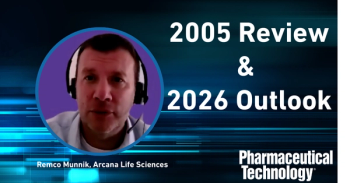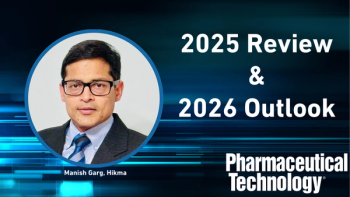
- Pharmaceutical Technology-01-02-2016
- Volume 40
- Issue 1
Bio/Pharma’s 2016 Agenda in Europe
Regulatory, corporate restructuring, and manufacturing issues will challenge bio/pharma to meet the needs and expectations of patients around the world.
In the past 20 years, blockbuster drugs dominated the bio/pharma market in developed economies, and emerging nations increased their demand for treatments for chronic and specialized conditions. At the same time, drug owners approached the patent cliff by altering or terminating existing R&D programs and shifted to new research areas through mergers, acquisitions, and partnerships. Recent trends in drug approvals, business strategies by bio/pharma companies, and regulatory initiatives may present additional changes and challenges in 2016.
The European Medicines Agency’s Committee for Medicinal Products for Human Use (CHMP) recommended 93 new medicines for marketing authorization in 2015, an increase from 81 in 2014. The 2015 approvals including 19 orphan drugs and 2 biosimilar products (1).
In comparison, the US Food and Drug Administration’s Center for Drug Evaluation and Research (CDER) in 2015 approved 45 new molecular entity and new biologic license applications (2) and the first biosimilar drug for distribution in the United States. Many of the new molecular entities--47% of the approvals in 2015--were for rare diseases that target smaller patient populations and, therefore, require smaller quantities of drug doses compared to blockbuster drugs.
CHMP expects the number of applications for initial marketing authorization in 2016 to remain constant with 110 applications in 2016 versus 112 in 2015. The number of applications for medicines containing a new active substance should remain stable, the agency reported in a press statement (3).
Global drug demand
According to a new report (4), improved patient access to chronic disease treatment and breakthrough drug therapies will help reduce the “medicine use gap” between emerging and developed markets, driving global spending on drugs to grow at a 4-7% compound annual rate over the next five years. Regional economic conditions and healthcare infrastructure, however, will dictate the types of drugs prescribed, number of medicine doses, and ultimately, the volume of pharmaceutical sales.
By 2020, total patient spending on medicines will be $1.4 trillion, reports the IMS Institute for Healthcare Informatics (4); however, the global spending increase from 2015 to 2020, estimated to be 29-32%, is below the 35% increase of the prior five years.
Global medicine use will reach 4.5 trillion doses in 2020, the study predicts, up 24% from 2015. Emerging markets will account for most of the increase, led by India, China, Brazil, Indonesia, and Africa. Generic drugs, non-original branded drugs, and over-the-counter products will account for 88% of total medicine used in emerging markets, the report says. More than 90% of the prescription drugs filled in the US in 2020 will be generic drugs, up from the present level of 88%.
Brand spending in developed markets is expected to reach up to US$590 billion, a 34% increase in spending over 2015 on an invoice price basis, thanks to new product launches, and price increases in the US-which may be offset by discounts and rebates. Invoice price growth, which does not reflect discounts and rebates received by payers, is expected to continue at historic levels during the next five years; however, competition and payer resistance will keep net price increases to 5-7% annually.
Spending growth will be curbed by patent expiries, which will result in US$178 billion in reduced spending on branded products, including US$41 billion on biologics, as biosimilars become more widely adopted.
The rise of specialty medicines
Global spending on specialty medicines used to treat chronic, rare, or genetic diseases is expected to reach 28% of the total spending by 2020. The report estimates that more than 225 medicines will be introduced by 2020, with one-third focused on treating cancer; other development areas are hepatitis C, autoimmune disorders, heart disease, and rare diseases. Adoption of specialty medicines will be most prevalent in established markets.
These numbers, and types of drugs approved, indicate that the drug-development market may be headed in a new direction, raising questions about the ability of the current R&D and manufacturing infrastructure to adapt to the changing market and meet global patient needs for drugs. This shift in production requirements-combined with lower profit margins for former blockbuster brand drugs now prescribed as lower-cost generic drugs-has implications for drug development and manufacturing processes.
Investing in infrastructure
Attractive credit terms in recent years prompted some bio/pharma manufacturers to invest in facilities and equipment. Encouraging companies to make capital improvements to avoid future quality and manufacturing potholes, however, can be a tough financial and regulatory road to travel.
In a 2015 survey of 100 executives from top bio/pharma companies (5), less than half said they planned to increase investments in late-stage R&D. Instead, marketing/distribution (79%), drug discovery/early stage R&D (70%), clinical trials (60%), technology acquisition (59%), and patenting (50%) were higher investment priorities.
The acquisition strategy
In 2015, bio/pharma companies and contact service organizations actively repositioned their business profiles though a stream of mergers, acquisitions, and collaboration agreements, as well as divestitures of specific product lines or business units.
Senior executives of large biotechnology and pharmaceutical companies surveyed by ReedSmith (5) plan to stay on the investment track; 94% plan to initiate an acquisition over the next 12 months; more than one-third plan to divest assets. The search for external opportunities was a priority; more than half of the respondents said they are planning peer-to-peer research partnerships; 85% report that the plan to hire a contract research organization.
More respondents (74%) said major pharmaceutical producers would target companies with strong drug discovery or early-stage R&D potential versus companies involved in late-stage R&D (69%). Companies focused on personalized medicine or diagnostics were expected to be popular targets by 70% of those responding. Less than 30% predicted companies will look to build on their own areas of expertise through acquisitions; 58% said major pharmaceutical producers will seek companies outside their current areas of expertise (3).
Right-sizing R&D efforts
For the past six years, Deloitte and GlobalData analysts examined R&D results for the top 12 publicly held, research-based life science companies (measured by R&D spending in 2008-2009); in 2015, four mid- to large-cap companies were added to the study. Analysis of the pharma industry’s performance in generating return on investment in new drug development revealed a continuing pattern of declining returns, from 10.1% in 2010 to 4.2% in 2015. While the cost to develop an asset increased 33%, from $1.188 billion in 2010 to $1.576 billion in 2015, the average peak sales per asset dropped 50%, from $816 million in 2010 to $416 million in 2015. The numbers, the report authors say, “do not add up for life sciences R&D to generate an appropriate return” (6).
There was some good news; the mid- to large-cap companies outperformed the top 12 publicly held companies, indicating that different R&D business models could produce better results.
Despite the decline in return on investment, the companies in the study continued to increase investment in R&D as a proportion of cash generated, from 25.5% in 2004 to 29.4% in 2014. Investors, however, seek returns. Companies are more likely to return cash to shareholders through dividends and share buybacks than they are to invest in acquisitions, product licenses, and internal R&D, the study concludes.
At larger R&D companies, legacy infrastructure, which may be difficult to improve, and excess overhead are major contributors to R&D costs. The smaller companies in the study did not have the large infrastructure, but risk becoming too complex and lose their R&D productivity advantage as they grow. Both groups must challenge additional investments at each phase and evaluate returns for each asset, the study reports.
The authors suggest that focusing R&D efforts on stable therapy areas and specialty therapeutics will add to scientific, regulatory, and commercial value propositions. Agility, flexibility, and a focus on science will allow external sources of innovation to be optimized. Reducing development complexity by streamlining functions and addressing unproductive infrastructure can improve returns.
Bio/pharma professionals project 2016 prospects
The big decisions about company acquisitions, mergers, and business development may be made in the boardrooms of bio/pharma companies, but the front line professionals-those involved in formulation, development, and manufacturing functions-can offer interesting observations about the impact those business strategies have on the day-to-day tasks of bringing a drug to market.
Bio/pharma professionals from around the world participated in the 2015 Pharmaceutical Technology/Pharmaceutical Technology Europe annual employment survey (7). Respondents expressed opinions about job security (73.6% feel secure in their current position), seeking new opportunities (55.8% would like to leave their job), and increasing dissatisfaction with salary levels. The respondents also expressed opinions about trends in the industry, how changes impact their daily work, and future business prospects.
Business is better. More than 40% of EU-based respondents said business at their company increased in 2015, a drop from the 56% who reported an increase in 2014. More than one-quarter of the respondents (26.6%) reported that their company had been through a merger or acquisition in the past two years, up from the 19.7% reporting in the 2014 survey. A similar number of respondents reported a company downsizing or restructuring (28.2% in 2015 vs. 25.4% in 2014).
Outlook is somewhat optimistic. Half of the respondents (50.4%) predicted that their company’s business will improve in 2016; more than one-third (36.1%) expected no significant change. These numbers, while positive, were less optimistic than predictions made for 2015 and 2014 in previous surveys.
The EU-based segment was significantly less positive in their outlook for the bio/pharma industry: 39.5% said business would improve in 2016, compared with 55.3% who expected improvement for 2015. Respondents based in North America (52%) were significantly more optimistic that business would improve.
The longer-term horizon (five years) was more optimistic; 59.6% of the EU-based respondents predicted that business will improve; however, 16.8% expect business to improve overseas, but not domestically.
The 2016 agenda
Early indications are for mergers and acquisitions activity to continue in 2016, and prospects for new drug approvals also are strong. Among these distractions, the industry must drive ahead to seek shareholder value and affordable, effective patient therapies at the same time.
References
1. European Medicines Agency, Statistics, www.ema.europa.eu/ema/index.jsp?curl=pages/news_and_events/document_listing/document_listing_000256.jsp&mid=WC0b01ac0580099fbb
2. FDA, Novel New Drugs Summary 2015, online, www.fda.gov/Drugs/DevelopmentApprovalProcess/DrugInnovation/ucm474696.htm, accessed, 5 Jan. 2016.
3. EMA, “EMA Management Board: highlights of December 2015 meeting,” Press Release (18 Dec. 2015)
4. IMS Health, Global Medicines in Use in 2020 (Parsippany, NJ, November 2015).
5. ReedSmith, Life Lines: Life Sciences M&A and the Rise of Personalized Medicine (London, 2015).
6. Deloitte Centre for Health Solutions, Measuring the Return from Pharmaceutical Innovation 2015 (London, 2015).
7. 2015 Pharmaceutical Technology/Pharmaceutical Technology Europe Annual Employment Survey.
Article DetailsPharmaceutical Technology Europe
Vol. 28, No. 1
Pages: 12–14
Citation:
When referring to this article, please cite it as R. Peters, Bio/Pharma’s 2016 Agenda," Pharmaceutical Technology Europe 28 (1) 2016.
Articles in this issue
about 10 years ago
Parenteral Packaging: 2021about 10 years ago
Politics and Pricing Will Challenge Manufacturers in 2016about 10 years ago
Managing Market Expansion’s Effect on Proceduresabout 10 years ago
Phase-Appropriate Formulation and Process Designabout 10 years ago
Reducing the Documentation Burden in Process Validationabout 10 years ago
Reducing the Environmental Impact of Manufacturingabout 10 years ago
Cleaning Limits—Why the 10-ppm Criterion should be Abandonedabout 10 years ago
Using Deterministic Container Closure Integrity Testingabout 10 years ago
The Market Consolidates for Better Serviceabout 10 years ago
Global Drug DirectionsNewsletter
Get the essential updates shaping the future of pharma manufacturing and compliance—subscribe today to Pharmaceutical Technology and never miss a breakthrough.




